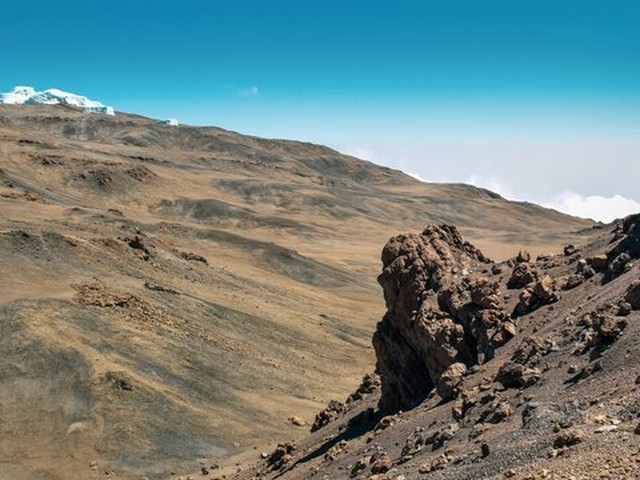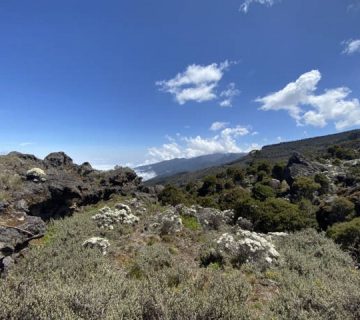Capture the Heights: Essential Photography-Friendly Gear For Kilimanjaro Treks
Standing as a beacon of adventure and natural wonder, Mt. Kilimanjaro calls to those who not only seek to conquer its towering peak but also to immortalize the journey through the lens of a camera. At Kilimanjaro Centre For Trekking and Ecotourism (KCTE), we understand that capturing breathtaking photos requires more than just a good camera; it demands photography-friendly gear tailored for the unique challenges of high-altitude trekking. Whether you’re a seasoned photographer or a casual shutterbug, this guide will help you select the perfect equipment to document your climb up Africa’s highest mountain.
The Photographer’s Checklist for Kilimanjaro
Choosing the Right Camera
When selecting a camera for your Kilimanjaro trek, consider weight, durability, and functionality. Mirrorless cameras strike an excellent balance between quality and portability, making them ideal for the rigors of trekking. Brands like Sony, Fujifilm, and Olympus offer robust models that perform well in diverse lighting conditions. If you prefer using a smartphone, ensure it has a capable camera system like those found in the latest models from Apple or Samsung, equipped with features such as optical zoom and night mode.
Lenses That Cover All Angles
The diversity of landscapes on Kilimanjaro—from rainforest canopies to alpine deserts—calls for versatile lens options. A wide-angle lens (such as a 16-35mm) is perfect for expansive landscape shots, while a telephoto lens (70-200mm or greater) can capture distant wildlife or detailed crater textures. Consider a lightweight, high-quality zoom lens to minimize gear without sacrificing shot variety.
Stabilizing Your Shots
Trekking can be rugged, and stable shots are a must. A lightweight, durable tripod or a monopod can be invaluable, especially for sunrise or sunset shots that require long exposures. Look for carbon fiber models that offer durability without the added weight.
Power Solutions for Extended Treks
Powering your camera throughout the trek is crucial. Invest in multiple high-capacity batteries, solar chargers, or a portable power bank specifically designed to handle cold temperatures—battery performance can decline in cold weather, which is typical of higher altitudes on Kilimanjaro.
Protective Gear for Harsh Conditions
Weather on Kilimanjaro can be unpredictable, with conditions ranging from dusty trails to freezing temperatures. Protect your equipment with weather-resistant camera bags, silicon coverings for cameras and lenses, and moisture-absorbent silica gel packs to combat lens fogging and fungal growth.
Adaptive Techniques for High-Altitude Photography
Mastering Light and Exposure
The equatorial sun paired with high altitudes produces bright, often harsh lighting conditions. Using Neutral Density (ND) filters can help manage these intense light levels, preventing overexposed photos and preserving color integrity. Additionally, understanding the histogram on your camera will guide you in making real-time adjustments to exposure, ensuring your images are neither too dark nor too light.
Composing with Clarity
Focus on composition techniques that enhance the majestic features of Kilimanjaro. The rule of thirds, leading lines, and framing are all effective in adding depth and interest to your photographs. Also, don’t forget to capture the human element: shots of trekkers or guides add scale and personal touch to your narrative.
The Right Settings for Every Scene
Switch between settings depending on the environment: use a higher ISO for early morning or twilight scenes, a faster shutter speed to capture moving subjects like birds or monkeys, and a smaller aperture (higher f-stop number) for detailed landscape shots.
Share and Care: Ethics of Photography on Kilimanjaro
Respect the mountain and its inhabitants—both human and wildlife. Always ask for permission before taking photos of local people or cultural sites. Be mindful of leaving no trace, keeping Kilimanjaro pristine for future generations and fellow trekkers.
Ready, Set, Climb—and Snap!
Now that you’re equipped with the knowledge of what photography-friendly gear to bring on your Kilimanjaro trek, all that’s left is to book your adventure. As you plan your journey, consider Kilimanjaro Centre For Trekking and Ecotourism (KCTE) for an expertly guided climb. We ensure that your trek is not only successful but also filled with unforgettable photographic opportunities.
FAQ: Perfecting Your Photographic Journey
Q: What is the best time of year for photography on Kilimanjaro?
A: The best times are during the dry seasons, from late June to October and from late December to March. These periods offer clearer skies and more stable weather conditions.
Q: Can I rent photography gear directly from KCTE?
A: Yes, KCTE offers a range of photography gear for rent, including tripods and lenses, to help lighten your load.
Q: Are there any photography workshops offered during the Kilimanjaro treks?
A: Absolutely! KCTE periodically organizes photography-themed treks led by professional photographers who specialize in high-altitude photography.
Q: What wildlife can I expect to photograph during the trek?
A: While wildlife is more sparse at higher altitudes, the lower slopes of Kilimanjaro are home to monkeys, a variety of birds, and occasionally larger mammals like elephants and leopards.
Q: How do I protect my camera from cold and moisture at higher altitudes?
A: Use insulated camera bags, keep silica gel packets within storage compartments, and never change lenses in exposed environments to prevent condensation.
Capture the spirit of adventure and the beauty of nature on your Kilimanjaro trek. With the right gear and a spirit ready to ascend, your photographic journey will be as monumental as the mountain itself. Book your climb with Kilimanjaro Centre For Trekking and Ecotourism (KCTE) today, and take the first step towards a trek—and a photo album—of a lifetime.




